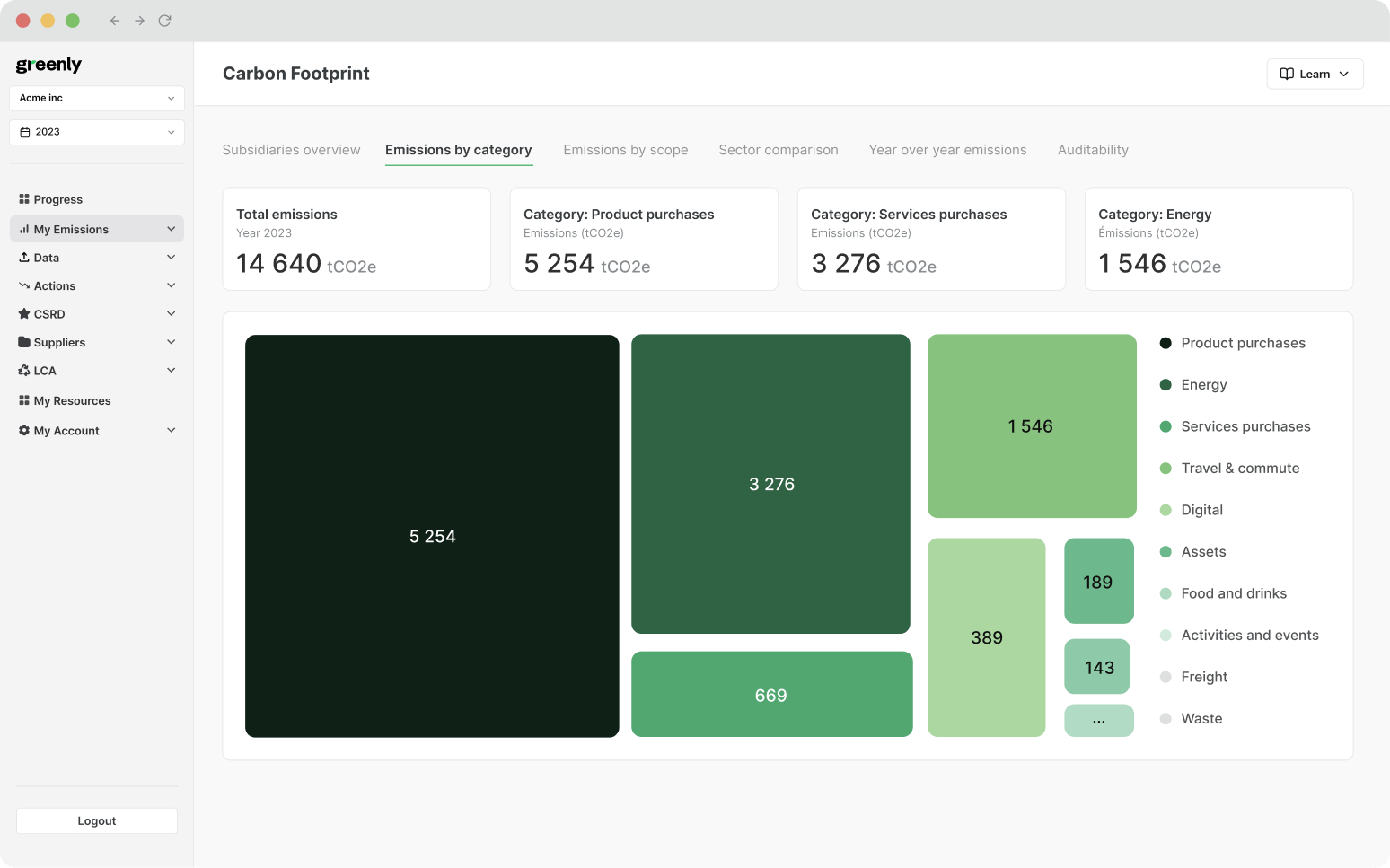ESG / CSR
Industries
What are green skills?



As the world moves towards a low-carbon economy, the skills we need in the workplace are shifting. Roles across nearly every sector are evolving, and sustainability is no longer the concern of a handful of specialists; it’s becoming a core part of how we all work.
Green skills are essential for building a workforce equipped to tackle the climate crisis and support the green transition. These skills aren’t limited to technical knowledge like operating renewable energy systems. They also include broader capabilities like sustainable decision-making, systems thinking, and innovation – skills that help individuals and organisations reduce their environmental impact.
In short, green skills are becoming the backbone of tomorrow’s job market. Whether you're in agriculture, finance, construction, or marketing, the ability to think and act sustainably is becoming more valuable by the day.
In this article, we’ll break down what green skills are, why they matter, which industries are driving demand, and how we can build a more sustainable future by developing them.
What are green skills?
Green skills can be technical, like installing solar panels or managing waste systems, but they also include broader capabilities, such as critical thinking, environmental awareness, and the ability to adapt to new, greener ways of working. In this sense, green skills are both practical and strategic, blending hands-on know-how with systems-level thinking.
What makes a skill “green” is not just the task itself, but the outcome it supports. A project manager leading the rollout of an electric vehicle charging network, a data analyst evaluating supply chain emissions, or a designer creating more sustainable packaging all rely on green skills – even if their job titles don’t include the word ‘sustainability’.
In fact, one of the defining features of green skills is their adaptability. As climate action becomes more urgent and industries evolve, workers across all professions will need to apply these skills in ways that align with both environmental goals and business needs.
Why do green skills matter?
The green transition is already underway, and it’s changing the world of work. From how we build homes to how we grow food and power cities, industries everywhere are rethinking the way they operate. And that shift isn’t just about new technologies, it’s also about people. More specifically, it’s about whether people have the right skills to support this transition.
As businesses and governments set increasingly ambitious environmental targets, there’s growing pressure to embed sustainability into everyday operations. That includes everything from energy efficiency and waste reduction to greener supply chains and product innovation. These aren’t niche concerns anymore, they’re becoming fundamental to how organisations stay competitive and compliant.
There’s also a broader social dimension. If the transition to a greener economy is going to be fair, then workers need support to reskill and adapt. That means putting systems in place to ensure no one is left behind, whether they’re in high-carbon industries facing disruption or in regions where access to training is limited.
Ultimately, green skills are what make the transition possible. They’re the practical tools we need to turn climate ambition into action.
| Area | Why green skills matter |
|---|---|
| Environmental | Help reduce emissions, waste, and resource use across sectors – essential for climate goals. |
| Economic | Drive innovation, create new job opportunities, and keep businesses competitive. |
| Workforce | Equip people with future-ready skills, improving employability and adaptability. |
| Social | Support a just transition by helping workers reskill and avoid exclusion from green growth. |
| Regulatory | Enable companies to comply with tightening climate and sustainability regulations. |
| Operational | Improve efficiency and resilience in business models, supply chains, and infrastructure. |
Examples of green skills by sector
Below are some of the sectors where green skills are becoming increasingly essential:
Renewable energy
Roles in this space often require technical expertise in areas like wind turbine maintenance, solar panel installation, or battery storage systems. But there’s also demand for skills in energy planning, systems integration, and regulatory compliance.
Construction and the built environment
Workers in construction increasingly need to understand energy-efficient design, low-impact materials, and green building certifications such as BREEAM or LEED. Architects, engineers, and even project managers now play a role in reducing the carbon footprint of buildings throughout their lifecycle.
Agriculture and food systems
Sustainable farming practices rely on skills in soil health, biodiversity management, water conservation, and regenerative agriculture. As the sector adapts to climate pressures, there’s also a growing need for knowledge in agri-tech and climate-resilient crop systems.
Manufacturing and industrial processes
From waste reduction and energy efficiency to circular economy thinking, manufacturing is undergoing a major transformation. Workers are expected to improve resource use, reduce emissions in production lines, and adopt cleaner technologies.
Finance and corporate services
Green finance is one of the fastest-growing areas for sustainability skills. Roles here often require an understanding of ESG metrics, climate risk disclosure, and sustainable investment strategies. More broadly, corporate teams need the skills to integrate sustainability into decision-making, reporting, and strategy.
Transport and logistics
The shift to electric vehicles, low-carbon fuels, and smarter supply chains is creating new demand for green logistics planning, fleet management, and infrastructure development.
Digital and creative industries
Even in sectors not traditionally associated with sustainability, green skills are becoming relevant. Developers and designers are being asked to reduce energy use in digital products, measure digital carbon footprints, and communicate sustainability clearly and credibly.
And these are just a few examples! In short, green skills aren’t limited to one industry or job type – they’re increasingly important across the entire economy.
The growing demand for green skills
According to LinkedIn’s Global Green Skills Report 2023, job postings requiring at least one green skill increased by 15.2% between February 2022 and February 2023. Yet only one in eight workers globally listed a green skill on their profile, suggesting that employers are struggling to find the talent they need.
And the gap is widening. From 2021 to 2024, the annual growth in demand for green skills has averaged 5.9%, while the supply of green talent grew by just 3.2%. This gap is accelerating, with demand rising to 11.6% in 2024 and supply increasing by only 5.6%.
This shortfall is already affecting industries with clear sustainability targets. In the UK, for example, retrofitting buildings and upgrading infrastructure to meet net zero goals will require 251,500 additional construction workers and 59,000 HVAC technicians over the next five years. Without focused investment in skills, these goals risk slipping out of reach.
The interest is there, particularly among younger generations, but the skills aren’t yet. A recent report found that while 61% of Gen Z say they want to work in a green job within the next five years, just one in ten is expected to have the right skills by 2030.
Key challenges in green skills development
One of the biggest obstacles is the lack of integration in education systems. Sustainability still isn’t consistently built into school or university curricula, especially outside of specialised degrees. As a result, young people may leave education without ever learning how their work could contribute to a greener economy.
There’s also a significant shortfall in vocational training and professional upskilling. Workers in high-emitting sectors like construction, agriculture, or manufacturing often don’t have access to practical, on-the-job training that reflects new technologies or low-carbon processes. Without government support or clear industry standards, the path to reskilling can be confusing or simply out of reach.
Access is another challenge. In lower-income countries and underserved regions, training opportunities are often limited or too expensive. Even where programmes exist, they may not reflect the specific needs of local industries or communities.
And finally, there’s an equity gap. Women and marginalised groups remain underrepresented in many technical and sustainability-focused roles. Without targeted investment in inclusive training and recruitment, the green economy risks repeating the inequalities of the old one.
If we want to close the green skills gap, we need to do more than just identify what skills are needed, we need to make sure people actually have the opportunity to develop them.
What is needed to develop and promote green skills?
Closing the green skills gap means building the systems that deliver them at scale and making sure they’re accessible to everyone. That means rethinking education, investing in workforce development, and strengthening collaboration between the public and private sectors.
1. Start with education
Green skills need to be embedded into education from the ground up – not just in specialist courses, but across subjects. That means integrating sustainability into school curricula, updating university programmes to reflect emerging environmental challenges, and encouraging cross-disciplinary learning. A business student today should leave with at least a basic understanding of climate risk and environmental impact.
2. Expand vocational training and on-the-job learning
In many sectors, the most effective green skills training happens outside the classroom. Expanding apprenticeships, certification schemes, and hands-on upskilling programmes, especially in sectors like construction, energy, and agriculture, is key. These need to be flexible, affordable, and built around real-world needs.
3. Involve employers
The private sector plays a crucial role in shaping what green skills are needed and how they’re delivered. When companies work with training providers and education systems, they help ensure that the content is relevant and aligned with industry demand. It also gives workers a clearer path to jobs once they’ve trained.
4. Use policy and funding to drive action
Governments can help set the pace by creating policies that incentivise reskilling, offering tax breaks for green training investments, and funding national programmes. Public-private partnerships are especially powerful here, combining funding with technical expertise and local knowledge.
5. Make inclusion a priority
Efforts to promote green skills need to reach beyond traditional talent pools. That means proactively supporting women, minority groups, and workers in vulnerable sectors or regions. If the green transition is to be fair and lasting, its benefits and opportunities need to be shared.

What can companies do to build green skills?
Companies have a critical role to play in developing the green skills their workforce needs to remain competitive, resilient, and compliant in a fast-changing economy.
Here are some practical ways businesses can take action:
| What companies can do | Description |
|---|---|
| Identify the green skills needed | Map out how sustainability affects your operations and define the key skills required across departments to support the transition. |
| Invest in training and development | Offer employees access to sustainability-focused learning, such as workshops, certifications, or climate risk and ESG training. |
| Encourage cross-functional learning | Break down silos by fostering collaboration between teams (e.g. procurement and sustainability) to build shared knowledge and systems thinking. |
| Support on-the-job learning | Create mentorships, job shadowing, or internal mobility programmes to build practical experience in sustainability-related roles. |
| Partner with training providers | Work with universities or training bodies to shape relevant curricula, co-develop apprenticeships, or sponsor sector-specific courses. |
| Foster a culture of sustainability | Embed sustainability into company culture by aligning goals with performance metrics, supporting green initiatives, and leading by example. |
| Prioritise equity and inclusion | Ensure all employees – regardless of background or role – have equal access to green skills development, supporting a fair and inclusive transition. |

Green skills in the United States
The US energy sector is at a crossroads, with shifting political priorities influencing the trajectory of green skills development. Following the 2024 election, President Donald Trump has signaled intentions to bolster fossil fuel production, including plans to expedite liquefied natural gas (LNG) export permits and increase drilling on federal lands.
These policy shifts have introduced uncertainty into the renewable energy sector. For example, solar and wind energy stocks experienced notable declines after the election, which reflects investor apprehension about the future of clean energy initiatives.
Despite federal policy changes, many US companies remain committed to sustainability and continue to prioritise green skills within their workforce. Corporate initiatives aimed at reducing carbon footprints and enhancing energy efficiency are commonplace, driven by consumer demand, state-level policies, and long-term economic benefits.
However, the divergence between federal policies and corporate sustainability goals may impact the availability of funding and support for green skills training programs. This could potentially slow the growth of a workforce equipped to meet the demands of a green economy.
The future of green skills
The global shift towards sustainability is not only reshaping industries, it’s transforming the skills we need to thrive. Across every sector, the ability to think and work in greener ways is becoming a core part of professional competence, not a niche specialism.
According to the International Labour Organization (ILO), transitioning to a greener economy could generate 24 million new jobs globally by 2030 – but only if the right policies are in place. That means investing in education, training, and support systems that make green skills accessible, relevant, and responsive to change.
Green skills are about preparing people and businesses for the realities of the future. A world with different energy systems, different consumer demands, and different expectations of what good business looks like.
The challenge now is not identifying what needs to change, it’s building the capability to change it. That includes helping people transition from carbon-intensive sectors, ensuring young people enter the workforce with future-proofed skills, and closing gaps in regions and communities that risk being left behind.
How Greenly can help your company
Greenly works with companies that are transitioning to more sustainable ways of doing business, helping them measure, manage, and reduce their carbon emissions with confidence. Our carbon management platform provides the data, tools, and guidance organisations need to take meaningful climate action and prepare for evolving regulatory requirements.
Our suite of carbon management solutions includes:
- End-to-end emissions tracking: We help companies calculate their carbon footprint across Scopes 1, 2, and 3, identifying the biggest sources of emissions across operations, supply chains, and purchased goods.
- Tailored action plans: We generate sector-specific decarbonisation pathways, helping you prioritise high-impact areas and take practical steps towards sustainability goals.
- Supply chain sustainability: We support procurement teams with tools to assess supplier emissions and make more climate-conscious sourcing decisions.
- Regulatory alignment: Our platform helps you prepare for sustainability reporting requirements under frameworks like CSRD, SECR, and the GHG Protocol.
Whether you're just getting started or looking to deepen your sustainability strategy, Greenly gives you the visibility and direction to act with confidence. Get in touch with us today to find out more.







